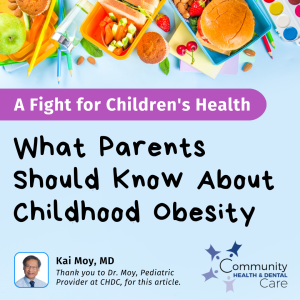Recent Posts
What Parents Should Know About Childhood Obesity
Advances in medical sciences have helped all of us to live better and longer lives. However, the rise in obesity is threatening this quality of life. Obesity is more than just a consequence of over-eating or poor eating habits. It is a complex chronic disease that can be controlled, treated, and prevented, just like other chronic illnesses, such as diabetes or asthma. Causes are multifactorial, such as lifestyle, socio-economic status, availability of healthy food choices, genetics, and pre-existing medical conditions like hypothyroidism. Thus, a multidisciplinary team approach is necessary to tackle the problem successfully.

What about other age groups?
Unfortunately, obesity is prevalent across all age groups. According to the latest National Health and Nutrition Examination Survey ( NHNES 2017—March 2020) from the National Center for Health Statistics, the prevalence of obesity in children and adolescents from age 2 to 19 years is an astounding 19.7%, or 14.7 million children affected. That is, nearly 1 in 5 children in the US is considered obese, whereas 1 in 3 adults are obese. This is not a good trend, since childhood obesity increases the risk for adult obesity. The CDC has declared childhood obesity an epidemic.

Why should we care?
As alluded to earlier, obesity threatens the quality of life of an individual. It increases the incidence of hypertension, type 2 diabetes, high cholesterol, heart disease, asthma and sleep disordered breathing (e.g. obstructive sleep apnea), and in growing teens, a potentially debilitating hip disorder called slip capital femoral epiphysis or SCFE. Furthermore, care of the medical complications of obesity will cost the nation nearly 173 billion dollars a year! That cost will continue to grow exponentially and unnecessarily if we do not take actions to prevent obesity now.
How do we define childhood obesity?
How is obesity defined for a child or adolescent? The body mass index, or BMI, is the screening tool used to determine if a child or teen is obese.
While the BMI is not a perfect tool, it is the most simplest to use. It is based on the weight and heigh of the child. A normal BMI falls between the 5th % to 85th % for age. If the BMI is between the 85th % and 95th %, then the child is considered overweight. A BMI greater than the 95th % for age is considered obese.
What can be done to prevent childhood obesity?
- Daily Exercise. Encourage daily exercise for at least 30 min to 1 hour /day. CDC data indicates that less than 1 in 4 children gets adequate exercise.
- Limit Screen Time. Limit total screen time to 2 hours/ day ( time on cell phones, iPads, video games, TV).
- Well Balanced Diet. Encourage healthy, balanced diet—less junk food, sweets, fatty foods, and more fruits and vegetables.
- Healthy Lifestyle Rule. Use the healthy lifestyle rule: 5-2-1-0--> 5 or more servings of fruit/vegetables per day; 2 hours of screen time/day; 1 hour of aerobic exercise daily (exercise that increases cardiovascular fitness, such as brisk walking, jogging, swimming, cycling, etc.); 0 sugar sweetened beverages ( e.g. soda).
- Well Child Visits. Finally, it is critical to keep up with a child’s health supervision (well child) visits. Monitoring height and weight accurately will permit determination of an accurate BMI. Tracking the trends of a child’s height, weight, and BMI will serve as an early warning signal for abnormal growth, whether it may be underweight, overweight, or obesity.
Call 610-326-9460 to schedule a well-visit for your child at Community Health & Dental Care today!
Thank you to Dr. Moy, former Pediatric Provider at CHDC, for this article.
